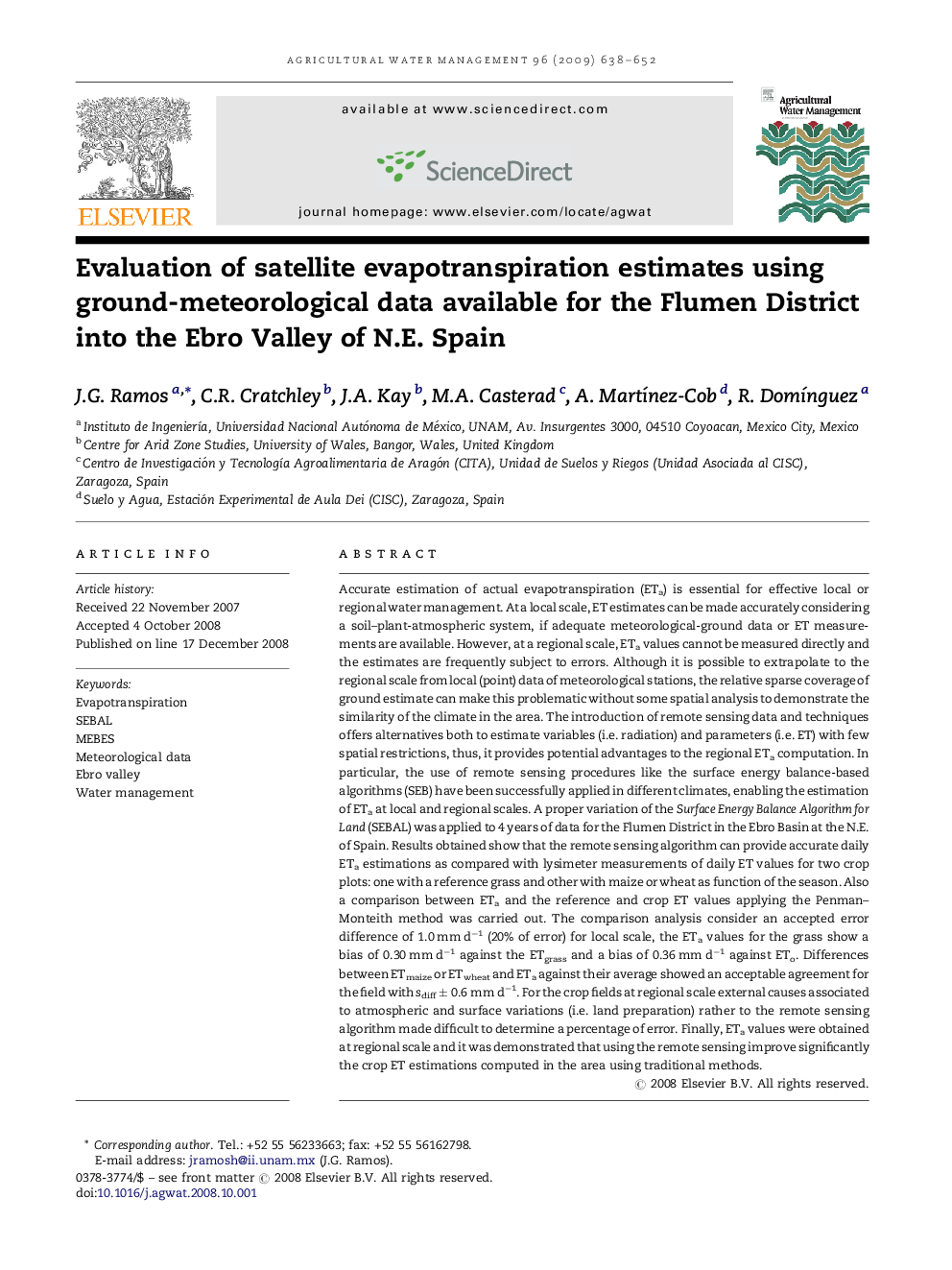| کد مقاله | کد نشریه | سال انتشار | مقاله انگلیسی | نسخه تمام متن |
|---|---|---|---|---|
| 4480253 | 1316482 | 2009 | 15 صفحه PDF | دانلود رایگان |

Accurate estimation of actual evapotranspiration (ETa) is essential for effective local or regional water management. At a local scale, ET estimates can be made accurately considering a soil–plant-atmospheric system, if adequate meteorological-ground data or ET measurements are available. However, at a regional scale, ETa values cannot be measured directly and the estimates are frequently subject to errors. Although it is possible to extrapolate to the regional scale from local (point) data of meteorological stations, the relative sparse coverage of ground estimate can make this problematic without some spatial analysis to demonstrate the similarity of the climate in the area. The introduction of remote sensing data and techniques offers alternatives both to estimate variables (i.e. radiation) and parameters (i.e. ET) with few spatial restrictions, thus, it provides potential advantages to the regional ETa computation. In particular, the use of remote sensing procedures like the surface energy balance-based algorithms (SEB) have been successfully applied in different climates, enabling the estimation of ETa at local and regional scales. A proper variation of the Surface Energy Balance Algorithm for Land (SEBAL) was applied to 4 years of data for the Flumen District in the Ebro Basin at the N.E. of Spain. Results obtained show that the remote sensing algorithm can provide accurate daily ETa estimations as compared with lysimeter measurements of daily ET values for two crop plots: one with a reference grass and other with maize or wheat as function of the season. Also a comparison between ETa and the reference and crop ET values applying the Penman–Monteith method was carried out. The comparison analysis consider an accepted error difference of 1.0 mm d−1 (20% of error) for local scale, the ETa values for the grass show a bias of 0.30 mm d−1 against the ETgrass and a bias of 0.36 mm d−1 against ETo. Differences between ETmaize or ETwheat and ETa against their average showed an acceptable agreement for the field with sdiff ± 0.6 mm d−1. For the crop fields at regional scale external causes associated to atmospheric and surface variations (i.e. land preparation) rather to the remote sensing algorithm made difficult to determine a percentage of error. Finally, ETa values were obtained at regional scale and it was demonstrated that using the remote sensing improve significantly the crop ET estimations computed in the area using traditional methods.
Journal: Agricultural Water Management - Volume 96, Issue 4, April 2009, Pages 638–652